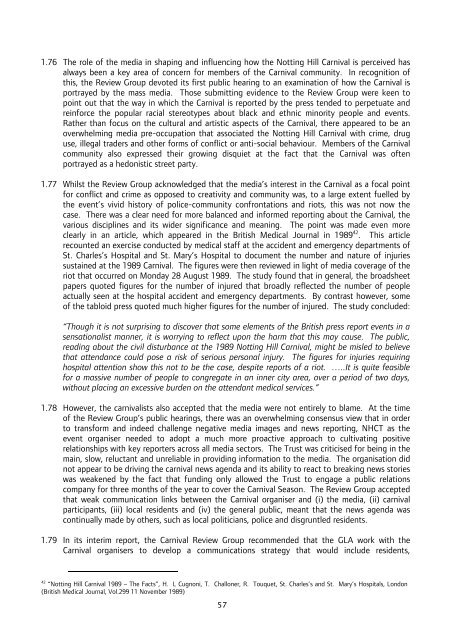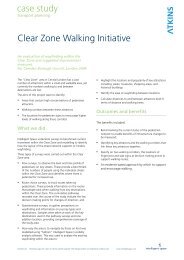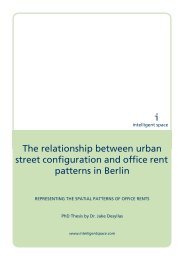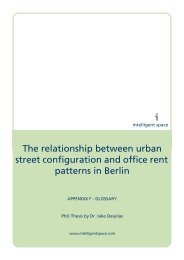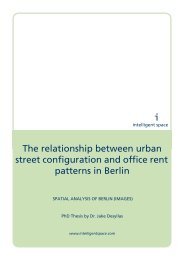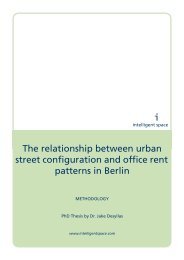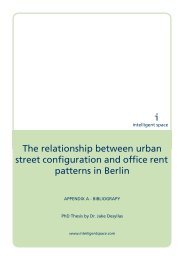Notting Hill Carnival Strategic Review - Intelligent Space
Notting Hill Carnival Strategic Review - Intelligent Space
Notting Hill Carnival Strategic Review - Intelligent Space
You also want an ePaper? Increase the reach of your titles
YUMPU automatically turns print PDFs into web optimized ePapers that Google loves.
1.76 The role of the media in shaping and influencing how the <strong>Notting</strong> <strong>Hill</strong> <strong>Carnival</strong> is perceived has<br />
always been a key area of concern for members of the <strong>Carnival</strong> community. In recognition of<br />
this, the <strong>Review</strong> Group devoted its first public hearing to an examination of how the <strong>Carnival</strong> is<br />
portrayed by the mass media. Those submitting evidence to the <strong>Review</strong> Group were keen to<br />
point out that the way in which the <strong>Carnival</strong> is reported by the press tended to perpetuate and<br />
reinforce the popular racial stereotypes about black and ethnic minority people and events.<br />
Rather than focus on the cultural and artistic aspects of the <strong>Carnival</strong>, there appeared to be an<br />
overwhelming media pre-occupation that associated the <strong>Notting</strong> <strong>Hill</strong> <strong>Carnival</strong> with crime, drug<br />
use, illegal traders and other forms of conflict or anti-social behaviour. Members of the <strong>Carnival</strong><br />
community also expressed their growing disquiet at the fact that the <strong>Carnival</strong> was often<br />
portrayed as a hedonistic street party.<br />
1.77 Whilst the <strong>Review</strong> Group acknowledged that the media’s interest in the <strong>Carnival</strong> as a focal point<br />
for conflict and crime as opposed to creativity and community was, to a large extent fuelled by<br />
the event’s vivid history of police-community confrontations and riots, this was not now the<br />
case. There was a clear need for more balanced and informed reporting about the <strong>Carnival</strong>, the<br />
various disciplines and its wider significance and meaning. The point was made even more<br />
clearly in an article, which appeared in the British Medical Journal in 1989 42 . This article<br />
recounted an exercise conducted by medical staff at the accident and emergency departments of<br />
St. Charles’s Hospital and St. Mary’s Hospital to document the number and nature of injuries<br />
sustained at the 1989 <strong>Carnival</strong>. The figures were then reviewed in light of media coverage of the<br />
riot that occurred on Monday 28 August 1989. The study found that in general, the broadsheet<br />
papers quoted figures for the number of injured that broadly reflected the number of people<br />
actually seen at the hospital accident and emergency departments. By contrast however, some<br />
of the tabloid press quoted much higher figures for the number of injured. The study concluded:<br />
“Though it is not surprising to discover that some elements of the British press report events in a<br />
sensationalist manner, it is worrying to reflect upon the harm that this may cause. The public,<br />
reading about the civil disturbance at the 1989 <strong>Notting</strong> <strong>Hill</strong> <strong>Carnival</strong>, might be misled to believe<br />
that attendance could pose a risk of serious personal injury. The figures for injuries requiring<br />
hospital attention show this not to be the case, despite reports of a riot. …..It is quite feasible<br />
for a massive number of people to congregate in an inner city area, over a period of two days,<br />
without placing an excessive burden on the attendant medical services.”<br />
1.78 However, the carnivalists also accepted that the media were not entirely to blame. At the time<br />
of the <strong>Review</strong> Group’s public hearings, there was an overwhelming consensus view that in order<br />
to transform and indeed challenge negative media images and news reporting, NHCT as the<br />
event organiser needed to adopt a much more proactive approach to cultivating positive<br />
relationships with key reporters across all media sectors. The Trust was criticised for being in the<br />
main, slow, reluctant and unreliable in providing information to the media. The organisation did<br />
not appear to be driving the carnival news agenda and its ability to react to breaking news stories<br />
was weakened by the fact that funding only allowed the Trust to engage a public relations<br />
company for three months of the year to cover the <strong>Carnival</strong> Season. The <strong>Review</strong> Group accepted<br />
that weak communication links between the <strong>Carnival</strong> organiser and (i) the media, (ii) carnival<br />
participants, (iii) local residents and (iv) the general public, meant that the news agenda was<br />
continually made by others, such as local politicians, police and disgruntled residents.<br />
1.79 In its interim report, the <strong>Carnival</strong> <strong>Review</strong> Group recommended that the GLA work with the<br />
<strong>Carnival</strong> organisers to develop a communications strategy that would include residents,<br />
42<br />
“<strong>Notting</strong> <strong>Hill</strong> <strong>Carnival</strong> 1989 – The Facts”, H. L Cugnoni, T. Challoner, R. Touquet, St. Charles’s and St. Mary’s Hospitals, London<br />
(British Medical Journal, Vol.299 11 November 1989)<br />
57


